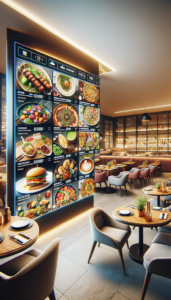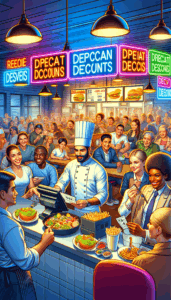How QSRs Can Leverage AI to Boost Efficiency, Profits & Customer Satisfaction
- Phone: +1(833)PHX-Geek
- 712 H St NE Suite 1904 Washington, D.C. 20002
Are you looking to come to Toast POS? Follow this link to sign up and get a free quote from your local Toast Rep. They will come out to your restaurant, and give you a free, no obligation quote.
AI is rapidly reshaping quick‑service restaurants (QSRs). By 2025, the global AI‑in‑QSR market is projected to hit $4–21 billion, with nearly 50% of chains planning deployments over the next 2 years. Operators predict revenue boosts of 10–31% from AI‑powered upselling, personalization, and dynamic pricing. 
Voice‑activated drive‑thrus (e.g., Nvidia/Yum at Taco Bell, Pizza Hut) and chatbot ordering (Starbucks’ Green Dot Assist) reduce wait times and errors. AI systems can also analyze purchase patterns to deliver tailored upsell suggestions, raising order value ~15%. And 85% of customers welcome AI suggestions.
AI-driven predictive inventory reduces waste 15–20% and avoids stockouts. Smart sensors and predictive maintenance cut downtime ~25%. Robotic fryers and burger‑flippers (e.g. “Flippy”) are increasingly used—23% of QSRs already use such robotics.
Labor accounts for ~30% of costs in QSRs. AI‑based scheduling tools forecast traffic—based on sales, weather, events—and reduce labor costs by ~18–20%, while optimizing shifts to curb burnout. It also flags underperforming days so managers can adjust proactively.
 AI‑powered digital menus change dynamically by time, day, weather, inventory, or customer segment—boosting sales by 7–20%. Dynamic pricing strategies lift profits 2–10%.
AI‑powered digital menus change dynamically by time, day, weather, inventory, or customer segment—boosting sales by 7–20%. Dynamic pricing strategies lift profits 2–10%.
AI-driven personalization extends beyond ordering. Loyalty systems using AI to tailor offers and promotions can improve engagement by ~30% and nurture retention—especially since 70% of users engage with AI/chatbots for support . Smaller chains are already building AI-powered BI dashboards atop Toast data to better understand customer behavior.
Yum/Nvidia: AI‑voice ordering at ~500 locations in 2025; full digital ordering across brand aims to increase digital penetration and upsell rates.
Starbucks: ‘Green Dot Assist’ across 35 stores now, scaling nationwide by fiscal 2026—aimed at faster service and shorter queues.
Chipotle: Using AI‑powered recruiting (Paradox/Ava Cado) to cut hiring time 75%, and customer insight platforms to personalize rewards.
Many QSRs are data‑rich but data‑dumb—they struggle to connect systems to extract value. The key is investing in affordable AI tools with strategic integration: smart routers for inventory, scheduling platforms, loyalty engines—all linked to POS. Partnering with experienced providers rather than building in‑house can reduce adoption friction.
Audit workflows: assess bottlenecks in ordering, wait time, prep, inventory, staffing.
Pilot ordering and menus: choose a drive‑thru kiosk or voice‑assistant pilot.
Integrate predictive inventory & scheduling: sync with POS data.
Add personalization engine: integrate with loyalty and marketing systems.
Refine and expand: iterate based on data and customer/staff feedback.
AI is the secret sauce for QSR success. Brands like Yum, Starbucks, Chipotle, and dozens of specialty and smaller chains are already reaping benefits in efficiency, revenue, and guest satisfaction. With customer-facing benefits and operational gains lining your margins, the time to adopt AI is now.